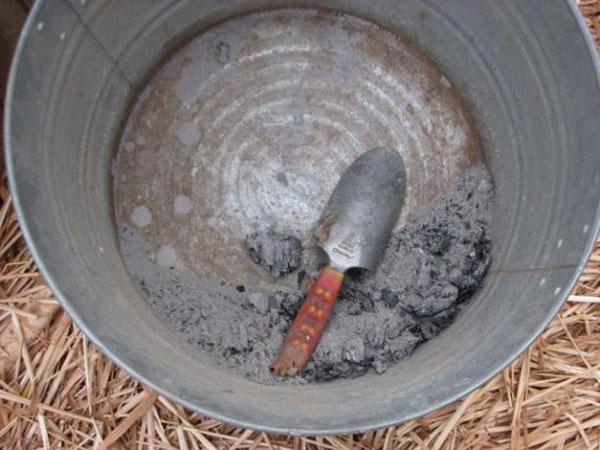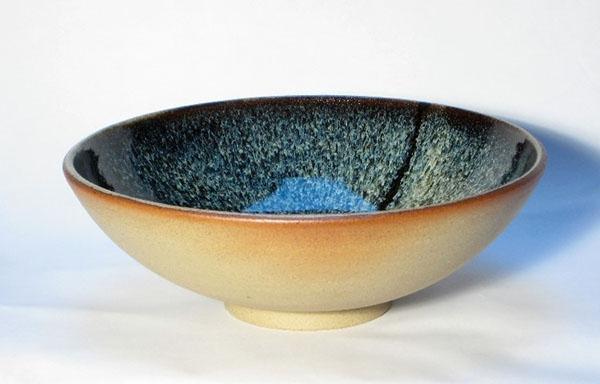How you can use wood ash at home or in your garden
 When burning wood, wood ash remains. There are many uses for ashes in the countryside. From one bunch of logs, you will receive about 8 kg ash, and sometimes even more, depending on the heat source, heating device and the properties of the wood.
When burning wood, wood ash remains. There are many uses for ashes in the countryside. From one bunch of logs, you will receive about 8 kg ash, and sometimes even more, depending on the heat source, heating device and the properties of the wood.
Read also the article: ash as fertilizer in the country!
Safety first

Although the ash may seem cold, buried coals last for several days, sometimes a week.
How wood ash was used
 Our ancestors learned to make lye, a caustic cleaning agent, about 5,000 years ago by running water through wood ash. Then they began to combine the mixture with animal fats, resulting in soap. Some traditionalists still do this.
Our ancestors learned to make lye, a caustic cleaning agent, about 5,000 years ago by running water through wood ash. Then they began to combine the mixture with animal fats, resulting in soap. Some traditionalists still do this.
Early Americans used ash or homemade alkaline water to clean wooden floors, wash clothes and bedding, and soak slaughtered pork carcasses to remove hair from the skin. For centuries, potters and ceramists have used wood ash to create patterns on their products.
Rather than throwing ash in the trash, save it for indoor and outdoor use. Below are some topical recommendations.
Tips for modern use
We will tell you about the options for using ash in modern suburban life.
Changing the soil of the lawn and garden plants
 Wood ash contains potassium, calcium and various trace minerals important for plant health. It also works well as a lime substitute to raise the pH of acidic soil. Interestingly, unlike limestone, which can take 6 months or more to change the soil pH, wood ash is water-soluble and has a quick effect.
Wood ash contains potassium, calcium and various trace minerals important for plant health. It also works well as a lime substitute to raise the pH of acidic soil. Interestingly, unlike limestone, which can take 6 months or more to change the soil pH, wood ash is water-soluble and has a quick effect.
 Do not apply ash to lawns and decorative plantings without testing the soil. Around plants that love high acidity (blueberry, rhododendrons, azaleas, holly), wood ash cannot be used. Soils with a pH in the range of 6.0 to 6.5 (optimal for most lawns and garden plants) can be treated at a rate of 9 kg, or one 22 liter bucket of wood ash per 93 sq. m. area per year without the risk of an excessive increase in pH.
Do not apply ash to lawns and decorative plantings without testing the soil. Around plants that love high acidity (blueberry, rhododendrons, azaleas, holly), wood ash cannot be used. Soils with a pH in the range of 6.0 to 6.5 (optimal for most lawns and garden plants) can be treated at a rate of 9 kg, or one 22 liter bucket of wood ash per 93 sq. m. area per year without the risk of an excessive increase in pH.
Wear safety goggles, gloves and a dust mask and spread the ash evenly on a dry, calm day. Stir the soil thoroughly after sowing.
Be sure to rinse off any ash that has settled on the leaves of actively growing plantings to prevent burning the foliage.
Scaring away snails and slugs
 Spraying a small amount around sensitive plants can scare away slugs. Wood ash irritates their wet bodies and drives them away. The effect disappears after rain or watering due to the dissolution of ash in water.
Spraying a small amount around sensitive plants can scare away slugs. Wood ash irritates their wet bodies and drives them away. The effect disappears after rain or watering due to the dissolution of ash in water.
Ice melting and anti-slip
On dusted paths, the ice will melt and the ash will provide better traction. It is not as effective as salt, it is rather dirty and can get on shoes in the house.However, it is free and harmless to pets' paws and paved areas.
Glass and metal cleaning
Believe it or not, wood ash quickly removes grease, dirt and stains on glass, and cleans silverware, dishes, grill grates and ceramic hobs.
Removing adhesive residue from store labels can be extremely difficult. Ash does an excellent job of this.
Dip a damp cloth in ash (or in a homemade paste made of ash and a little water), then rub the soiled area with a piece of cotton cloth, then rinse with water. Be sure to wear gloves to avoid burns.
Removing oil stains from stone, cement and asphalt
Sprinkle the oil with wood ash, rub with a cloth, then sweep. Repeat the procedure if necessary.
 Ash is a natural free remedy that can be used in country life with great benefit for oneself for completely different purposes. You will be able to perform routine cleaning and fertilization in the country faster and more efficiently without the use of chemicals, while saving money.
Ash is a natural free remedy that can be used in country life with great benefit for oneself for completely different purposes. You will be able to perform routine cleaning and fertilization in the country faster and more efficiently without the use of chemicals, while saving money.
Features of the use of wood ash - video
s